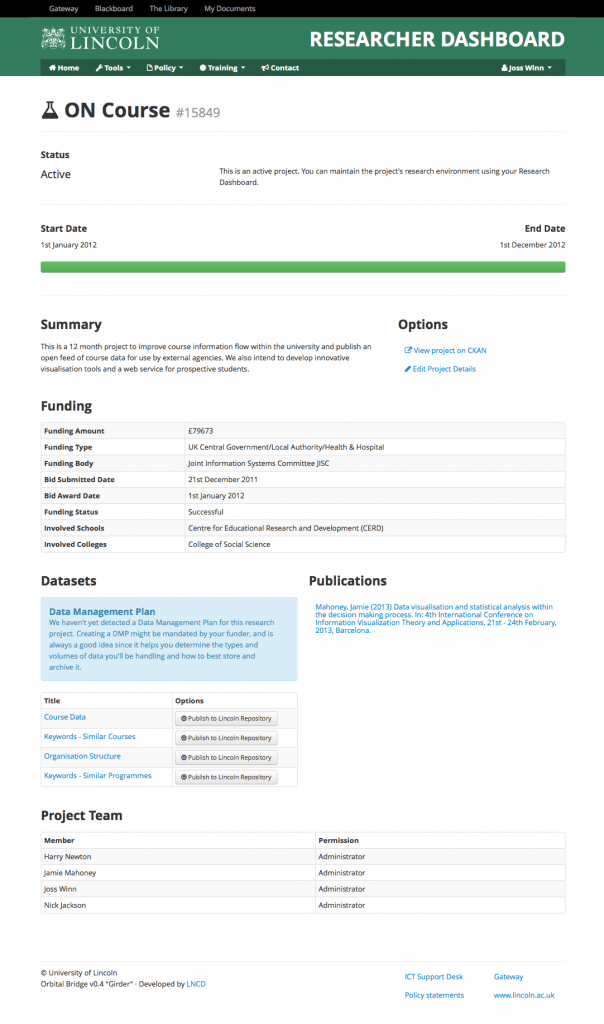I’m immensely excited that the following Grade 7 developer job at the University of Lincoln (initially for a fixed term of two years) is now open for applications. Please contact me if you’d like to discuss the role. If you don’t know Lincoln, it’s an interesting, historic small city and the University’s waterside Brayford Pool campus is a very nice place to work.
You can download the job description document, and apply online, at:
http://jobs.lincoln.ac.uk/vacancy.aspx?ref=LR4068
Research Information Services Developer
Brayford Library Team
Location: Brayford
Salary: From £30,424 per annum
This post is fixed term for two years
Closing Date: Sunday 30 June 2013
Reference: LR4068We are seeking to appoint an innovative and enthusiastic software developer, with demonstrable experience and understanding of research in an HE environment.
Based in the Library, and reporting to the Head of Electronic Library Services, this exciting new role will lead on coordinating and developing the University’s services and resources for the researcher community, including support for Open Access publishing and research data management.
You can expect to contribute towards significant institutional change in the way research information and research data is managed, analysed and disseminated at the University of Lincoln.
Working closely with other colleagues within the Library, ICT and the Research Office, you will be responsible for leading the technical design and development of research information services at Lincoln, including research data management, bibliometrics and research intelligence, research dashboarding, and the University’s Institutional Repository.
You must have an excellent understanding of the technologies and programming languages used in developing data-driven web services to support research. You will also have successfully managed projects, have good communication skills, and enjoy working as a member of a team in a busy environment.
You must able to take initiative, be well organised and have a proven ability to prioritise and meet tight deadlines. A familiarity with the current UK research environment is also essential.
Potential applicants are encouraged to contact Paul Stainthorp <pstainthorp@lincoln.ac.uk>for an informal discussion on 01522 886 193 or pstainthorp@lincoln.ac.uk.

















